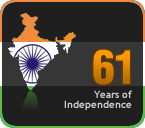Today we are passing the area of the world that actually is giving cause for much concern to the world.
The Peru current flows nothward along the west coast of South America. It is a cold water current & brings water from the Atlantic ocean into the warmer climates of the Equatorial Region. The Area around which I am right now - Ecuador coast is the far
reach of the current. After this the the current turns to the west & goes into the Pacific ocean. You can see the current with the broken line. The Current against this is the Panama Current that is a south bound current flowing from the gulf of Panama
to the south along the coast. This is the current marked by the thicker line.
In 1982 it was observed by the scientist Camilo Carillo the Peruvian fishermen used the term "Corriente del Nino" or "Current of the Christ Child" for a sudden southward current near Christmas. This current brought in a huge cache of fishes from the
Equator & everyone was happy till the X-mas got over. After X-mas it was discovered that there was a steep decrease in fishes in the ocean as the spawning circle was shattered.
Since the 80's for some reason, especially during the late Dec to early April, this current, now coined the El Nino Current occurs southward in this part of the world, displacing the Peru current. It is never really of same intensity & has been
recorded to be up to 2 Kts & the duration of the current may also vary.
This is the current that many indicate is actually changing the balance of the Weather systems in the Southern Hemisphere & thus the world. The other branch of the scientific arena contend that the El Nino current is itself a result of the changing
weather systems.
Whatever the reason, Everyone recognizes El Nino as a symbol of the Global Climate change today. I am pleased to report that this year at least till the end of Sept, El Nino is not to be seen & the Peru current impedes my southward progress with a
steady one knot resistance.







No comments:
Post a Comment